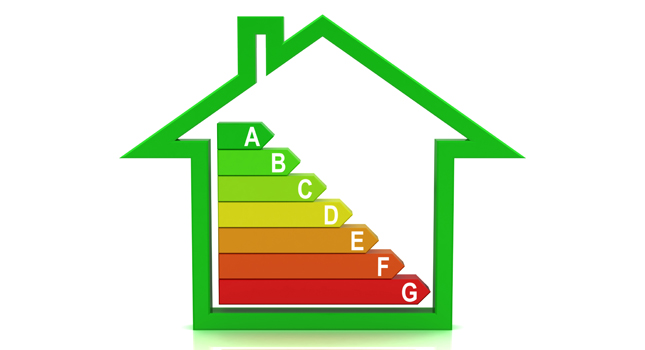

Phil Marris discusses how new MEES energy standards present installers with opportunities to drive refurbishment of HVAC systems in the rental market and commercial buildings
Making commercial buildings more sustainable has been on the agenda for a number of years. It has been easy for commercial landlords to sweep energy-efficiency under the rug on the assumption that they have ‘plenty of time’. Well, that ‘plenty’ is fast becoming scarce. For sustainability-savvy contractors, they are about to become a whole lot busier.
MEES
In February 2015, as one of the last acts of this parliament, the long-expected Energy Efficiency (Private Rented Property) (England and Wales) Regulations were ratified, effective from 1 April 2018. Colloquially, they have come to be known as the minimum energy efficiency standards (MEES).
Under MEES regulations, landlords will be required to upgrade their Energy Performance Certificate (EPC) to at least an E rating. Letting properties with an F or G rating will be considered unlawful.
It is estimated that one in five certified buildings are currently below the new minimum standard, but this will only increase when the EPC ratings are next re-certified. Due to occur in around 2018, this is likely to put current category E buildings under the spotlight too.
Though there will be temporary exemptions to compliance, it is estimated that nearly 75,000 commercial premises are currently rated F or G, and a further 65,000 are rated E. Combined, this means that close to 35% of the UK’s current certified commercial buildings will require work to improve energy-efficiency. This means that the time available for landlords to react is relatively short, and that should create a strong pipeline of work.
In terms of heating and ventilation, there are opportunities that the required compliance with MEES presents to installers. They can use their expertise to recommend sustainable solutions that reduce buildings’ running costs and lower their carbon footprint, which in turn will improve their EPC rating. Additionally, installers embracing renewable technologies now can position themselves as capable partners in advance of landlords’ inevitable scramble to comply.
Commercial Reluctance a Thing of the Past?
Until now, for many commercial building owners and businesses, the higher the initial cost and the longer the wait for returns on investment, the less likely energy-efficiency measures are to be put in place. Out-of-date, inefficient heating systems can last for decades, so the old adage ‘if it ain’t broke, don’t fix it’ has become all too common.
In existing buildings, there has been the added complication of split-incentives: the business that occupies the building and is responsible for operating costs, and the landlords that own it and are responsible for capital improvements. It is a conflict that has made it too easy to delay energy refurbishment.
Under previous MEES drafts, landlords would be required to undertake works that could be funded under the non-domestic Green Deal. Tenants, the ultimate beneficiaries of energy-saving work, would be required to contribute to installation repayments as part of their energy bills, eventually resulting in there being no upfront costs for the landlord.
However now, in an effort to remove this split-incentive issue as well as the shortage of available and affordable Green Deal finance, the responsibility to comply lies solely with the landlord. They will be required to make any improvements where the projected energy savings are more than the cost of the work spread over seven years; the tenant is under no obligation to contribute.
It means that landlords are now legally obliged to become more knowledgeable about the most efficient ways to run their buildings. Landlords may be totally unaware of the energy saving potential of new technologies that can make use of renewable energy sources such as heat pumps, as well the compatible heating technologies that work best with them to maximise savings and maintain comfortable temperatures to the occupants.
This is the perfect opportunity for installers to step in and work with the manufacturers of these technologies to drive this investment.
Sustainable Recommendations
The energy used to heat and power non-domestic buildings is responsible for approximately 12% of the UK’s CO2 emissions. Naturally, it is an area that commercial landlords will seek to improve as a means to comply with MEES. For new buildings, it is considerably easier to integrate renewable heat technologies than it is in those currently in use. But the DECC estimates that 60% of today’s non-domestic buildings will still be in use in 2050, and regulatory requirements for energy-efficiency are only going to get stricter.
As energy demands on commercial buildings begin to resonate within the sector, decision makers will favour suppliers and contractors who promote sustainable development. Moreover, they will seek out those who boast the most experience in implementing these solutions.
For installers, if they can develop relationships with product manufacturers and service providers within the HVAC sector that operate with a sustainable philosophy, they will be best-placed to recommend solutions that benefit all parties.
Of course, with a legal framework now in place, failing to recommend HVAC solutions that could contribute to a higher EPC rating could cause reputational damage; imagine how a business would view the implementation of an expensive new heating system, only to find that the contractors grossly overestimated its energy saving potential? HVAC professionals need to become experts in sustainable solutions, not only for the benefit of the environment, but for the benefit of their own businesses.
The countdown for commercial buildings is on – clued up installers can be the key to sustainable prosperity for all.
Phil Marris is managing director of Jaga Heating Products UK
If you'd like to keep up-to-date with the latest developments in the heating and plumbing industry, why not subscribe to our weekly newsletters? Just click the button below and you can ensure all the latest industry news and new product information lands in your inbox every week.